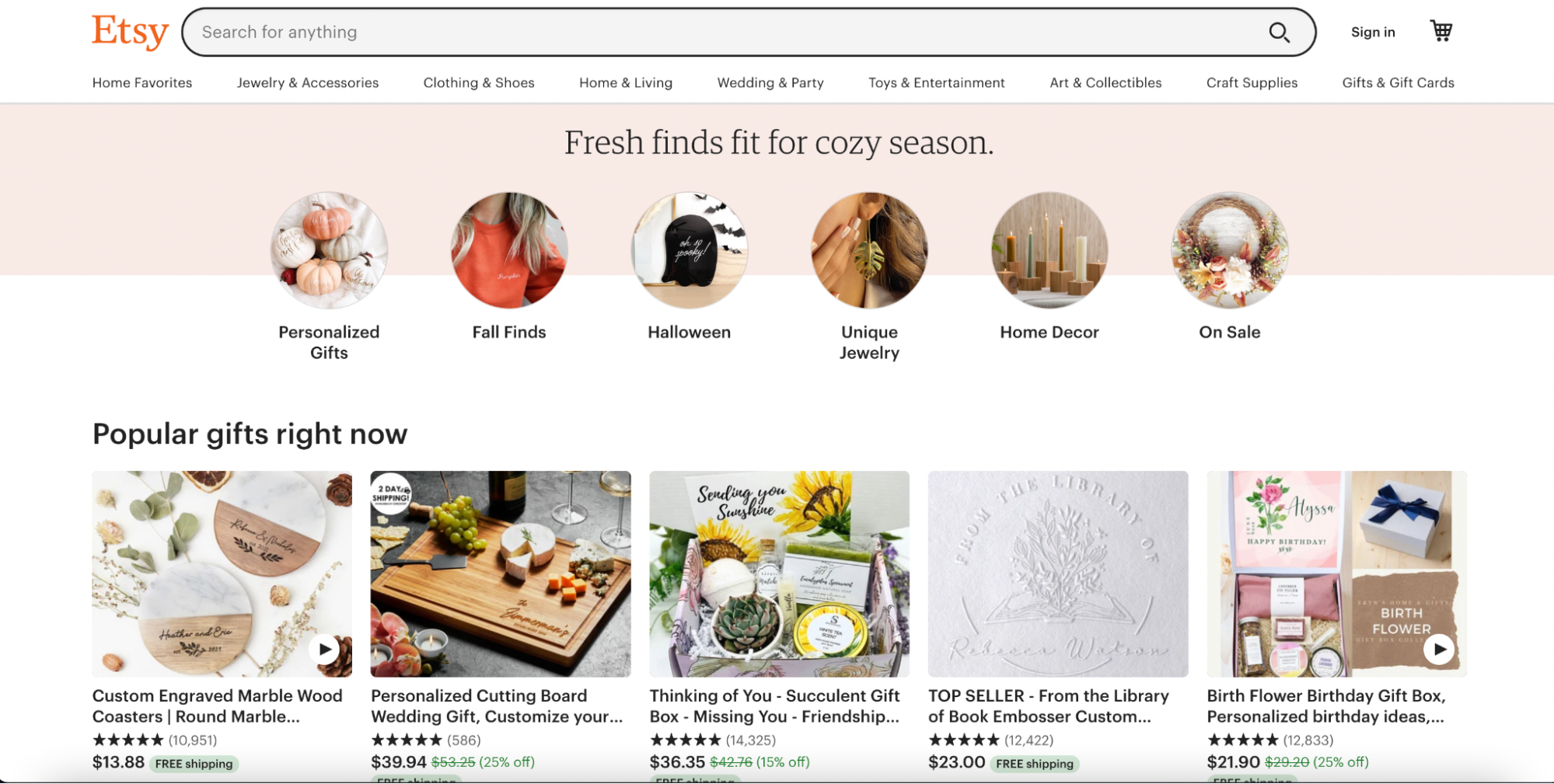The DIY & Crafts Blog

The Best Online Platforms to Sell Handmade Wooden Products
Selling handcrafted wooden treasures online opens the door to a vast audience. It’s a golden opportunity to carve out a profitable woodworking business. From custom furniture to charming decorative pieces, the right online platform can shape your success.
This guide uncovers the top online marketplaces for woodworking gems, highlighting their strengths and weaknesses. Dive in for actionable tips to elevate your sales and watch your craft thrive!
Why Sell Wooden Products Online?

Selling online offers several advantages over traditional brick-and-mortar stores:
- Wider Audience: Reach buyers globally instead of just in your local area.
- Lower Costs: No need for a physical store; save on rent and utilities.
- Flexibility: Sell anytime, anywhere, and manage your business from home.
- Scalability: Expand your business by adding new products or selling internationally.
With the rise of e-commerce, customers are increasingly looking for unique, handcrafted items, making this the perfect time to establish an online presence.
Choosing the Right Platform to Sell Handmade Wooden Products
In the vast ocean of e-commerce platforms, choosing the perfect vessel for your business is essential. Dive in as we explore the top contenders, highlighting their features and what makes them a match made in heaven for selling exquisite handmade wooden creations.
1. Etsy
Best For: Handmade, custom, and vintage wooden products.
Why Sell on Etsy?
- A large customer base is specifically looking for handmade goods.
- Customisable storefront for branding your woodworking business.
- Tools for SEO, advertising, and analytics to track sales.
Pros:
- Huge marketplace for handmade items.
- Supports custom orders and personalisation.
- User-friendly interface for sellers.
Cons:
- A competitive market; requires strong branding to stand out.
- Listing fees ($0.20 per item) and transaction fees (6.5% of each sale).
2. Amazon Handmade
Best For: High-quality, artisan-style wooden products.
Why Sell on Amazon Handmade?
- Trusted by millions of shoppers worldwide.
- Dedicated platform for handmade products, reducing competition from mass-produced items.
- Access to Amazon’s fulfilment services (FBA) for hassle-free shipping.
Pros:
- Massive customer base.
- Less competition from low-quality products.
- No listing fees (but a 15% commission on each sale).
Cons:
- Application process required to join.
- Higher commission fees compared to Etsy.
- Strict rules for sellers.
3. eBay
Best For: Unique and auction-based woodworking items.
Why Sell on eBay?
- Option to sell at fixed prices or auction-style listings.
- Established a marketplace with millions of daily users.
- Ability to reach customers looking for both handmade and vintage items.
Pros:
- Flexible pricing (auction or fixed price).
- Global reach and trusted payment system.
- Lower listing fees compared to Etsy.
Cons:
- High competition with mass-produced items.
- Seller fees vary and can add up quickly.
4. Shopify
Best For: Building your own branded woodworking store.
Why Sell on Shopify?
- Full control over branding, pricing, and marketing.
- Ability to sell directly from your own website.
- Various integrations with social media and payment gateways.
Pros:
- No marketplace competition; you control your store.
- Customisable website design and branding.
- Scalable for growth.
Cons:
- Monthly subscription fees ($29+ per month).
- Requires marketing and SEO efforts to drive traffic.
5. Facebook Marketplace & Instagram Shops
Best For: Selling locally and building a social media audience.
Why Sell on Facebook & Instagram?
- Free to list items and easy to connect with local buyers.
- Direct messaging allows for custom orders and inquiries.
- Great for building a following and marketing your brand.
Pros:
- No listing fees.
- Direct interaction with buyers.
- Can leverage social media marketing.
Cons:
- More suited for local sales.
- Requires active engagement and promotions.
6. Handmade at Amazon vs. Etsy: Which is Better?
| Feature | Etsy | Amazon Handmade |
| Audience | Focused on handmade goods | General online shoppers |
| Fees | 6.5% per sale + listing fee | 15% commission |
| Custom Orders | Highly customisable | Limited flexibility |
| Ease of Use | User-friendly | Stricter seller policies |
| Competition | Many similar shops | More exclusive |
Verdict:
Etsy is the better choice if you want a marketplace focused on handmade products. Amazon Handmade is ideal if you prefer access to a larger customer base with premium pricing.
How to Maximise Sales on Online Platforms
1. Optimise Your Product Listings
- Use High-Quality Photos: Showcase multiple angles with good lighting.
- Write Detailed Descriptions: Include size, materials, and customisation options.
- Use SEO-Friendly Titles: Example: “Handmade Wooden Cutting Board – Custom Engraved Oak Kitchen Gift.”
2. Offer Customisation
Personalised wooden products (e.g., engraved names, custom sizes) sell for 20-50% more than standard products. Customers are willing to pay extra for unique and meaningful customisations.
3. Promote Your Store
- Share your products on Instagram, Pinterest, and TikTok.
- Run Facebook and Google ads targeting craft lovers.
- Engage in woodworking communities and forums.
Building a social media presence helps drive consistent traffic to your listings, increasing sales potential.
4. Provide Excellent Customer Service
- Respond quickly to inquiries.
- Offer clear return policies.
- Encourage customers to leave reviews for social proof.
Positive customer interactions build trust and increase repeat business.
Conclusion

Venturing into the world of selling handmade wooden treasures online can be a goldmine! Choose your platform wisely—be it Etsy, Amazon Handmade, or your very own Shopify oasis. Success hinges on solid branding, savvy marketing, and exquisite craftsmanship.
By fine-tuning your product listings, embracing customisation, and wielding the power of social media, you can carve out your path to a flourishing online woodworking business. You can even reuse and repurpose old wooden furniture and give it a new life.
What’s your first stop in the realm of wooden crafts? Share your thoughts in the comments!









